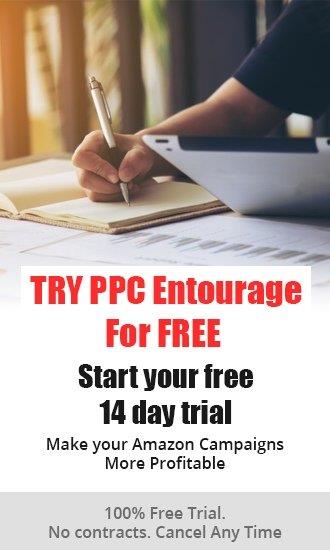Creating and launching an Amazon Sponsored Products ad campaign can be relatively easy. The real trick is knowing how to optimize it to improve visibility and increase sales over time.
Even with a great product and excellent listing copy, some Amazon sellers still struggle because they lack dialed-in Amazon PPC bidding strategies that allow them to limit wasted Ad Spend, while getting the best performance possible from each of their ad campaigns.
Optimizing Bids for Sponsored Products ads isn’t a ‘one and done’ activity. Sellers have to regularly monitor and update their bids to ensure that they are not missing any opportunities for better ad placement and are not overspending.
In this blog, you will discover five ways for optimizing your targets (keyword, ASIN, category, or auto targeting group), by placing targets into buckets based upon their past performance over a given period of time.
Auto Pilot (Smart Pilot)
The Auto Pilot feature inside of the Entourage software, allows sellers to set automation rules, which the system will then follow while making automated changes to campaigns. Types of automation include:
- Bid adjustments
- Adding search terms as negative keywords to campaigns or ad groups
- Adding new keywords based on search term data
- Finding and targeting new ASINs in Product Targeting campaigns
Auto Pilot looks at every keyword inside of the campaign chosen by a seller, the keyword bid price, and then correlates it to the seller’s ACoS target. The goal is to try to match a seller’s bid price to their ACoS target.
We will be using this tool to perform five target optimization strategies prioritized in order of importance (listed by where a seller is probably losing the most money).
I. Zero Sales Targets – (Use this setting to automatically detect non-performing targets and pause them to avoid wasted Ad Spend)
These targets are wasting Ad Spend and, depending on the number of clicks and the average cost per click, that amount could be a significant drain on the overall marketing budget.
It's important for sellers to know how many clicks they're willing to take without a sale before they want to take action with zero sales targets.
If within the given period of time (for example, 30 days) our target has five clicks and no sales, we can then take the action to pause that keyword or target.
We recommend doing this over varying segments of time (30 days and 90 days) to accommodate those keywords and targets that take a longer period of time to accumulate clicks.
II. Very High ACoS Targets – (Use this setting to optimize high ACoS targets based on click and lookback threshold. Can also be used to pause targets if above a certain ACoS)
Very high ACoS targets have orders but not at a profitable level. For example, if you have an ACoS target of 75% for a Discovery campaign, very high ACoS targets would be the targets within that campaign that have an ACoS of 150% or higher.
Once enough time has passed to accumulate sufficient data (have at least 5 clicks when looking back over a 30-day period), the seller should take action – pause the target or lower the bid by a percentage – for any targets performing above the established threshold.
III. Unprofitable Targets – (Use this setting to optimize based on ACoS range. You can also refine bids based on your needs. Clone and enter different ranges for additional control)
These targets are in the range of bid optimization where a seller could possibly get a profitable target. For example, if the seller’s ACoS target is 50%, the goal would be to find all the targets between 50% and 80% because they're in that range of being close to 50%.
Once again, these targets should have a minimum of 5 clicks when looking back over a 30-day period. The seller would then lower the bid in order to get to a profitable ACoS (meet the 50% threshold).
IV. Low CTR Targets – (Use this setting to optimize low CTR targets you may find in broader reach campaigns).
These are the targets and keywords that are getting Impressions but are not receiving many clicks. They don’t resonate with the intended audiences. This could be because they’re on a product detail page, have a Rest of Search placement, or just may be flooded by other similar ads (shoppers are not clicking because they have so many other options).
Low CTR targets can also have good placements but don’t resonate with shoppers because competitive products have better offers. The seller must uncover the reasons for low CTR targets in order to improve the CTR percentage.
For example, a seller might create a Discovery-based campaign to test out different keywords and targets to identify those targets with low CTR’s over the previous 30 days (with a minimum of 1,000 Impressions), and then pause them.
V. Low Converting Targets – (Use this setting to optimize low CV% targets out of your campaign that are costing ad dollars)
These are the keywords or targets that have low conversion rates (5% or less) over the last 30 days. Once identified, they should be paused.
Creating a successful Sponsored Products campaign is the result of accomplishing a series of smaller related tasks (targeting the right keywords, having a solid bidding strategy, placement targets, etc.).
The ideal bid price is one that helps to ensure that your ad will get a high enough position and enough exposure, to get impressions and attract valuable clicks. However, it is critical that the bid is low enough that the cost does not significantly diminish the benefits that those impressions and clicks deliver.
Implementing these five tips for optimizing bids on Amazon Sponsored Products can make an enormous difference over time.
Entourage: Software to Scale Amazon Ads and Results Driven Management.











